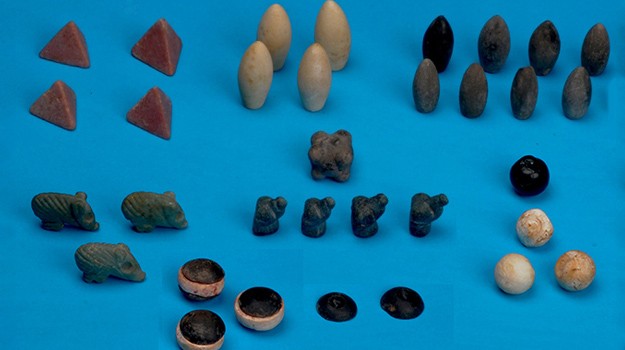Set of 5000-year-old board game pieces discovered in Turkey
Within the scope of Ilısu Dam rescue excavations, the missing pieces of a historical play set, which was found in 2012 in the southeastern province of Siirt’s Başur Mound, have been unearthed.
Rescue excavations have been completed in Başur Mound, which is shown as one of the most important archaeological works of the last 10 years by Artnews, a visual arts magazine published in the U.S.

Speaking to the state-run Anadolu Agency, the head of excavations and Ege University Faculty of Letters Department of Archeology lecturer, Haluk Sağlamtimur, said that the excavations started in 2007 within the scope of Ilısu Dam and the hydroelectric plant (HES) project reached important data on Mesopotamian history.
Stating that during the excavations in 2012, they found play set pieces that were thought to have been played in a cemetery 5,000 years ago and they identified it as the world’s oldest figurative game set, Sağlamtimur said that they were delighted to find the missing stones of the game in recent excavations.
“A few parts of the game were missing, we unearthed them in the recent excavations, and we completed the set.
This game set is very important, it is the earliest game set that can be dated in a wide region covering Mesopotamia and Anatolia.
These are dated between 3,100 and 2,900 B.C. This is probably a grave gift. This game set does not seem to be played too much; there is no wear on it. It is important in this respect. We found the missing figures in the last excavations and we are really happy,” he said.
Stating that the game set was defined as “the ancestor of chess” and similar games were also found in Egypt, Sağlamtimur explained, “Unfortunately, we could not find the board of this game set.
It was probably inside the grave, but it decayed. If we found its board, we could understand how to play it. Games like this continue, they have similar ones in even in Egypt.
The game set consists of colored stones, something must be related to the color in the game.
The two main animal figures that gave the game its name are pigs and dogs. So, we named this game as ‘pigs and dogs’ because the games that were found later were named as such.
When we consider the shapes and numbers of the stones, we estimate that the game is based on number four. For now, these are the earliest game stones in the world in figurative terms and are exhibited at the Batman Museum. Anyone can see this game set.”
Ege University rector Necdet Budak also stated that these finds are very important for the history of archeology and congratulated Sağlamtimur and his team for their successful work.





